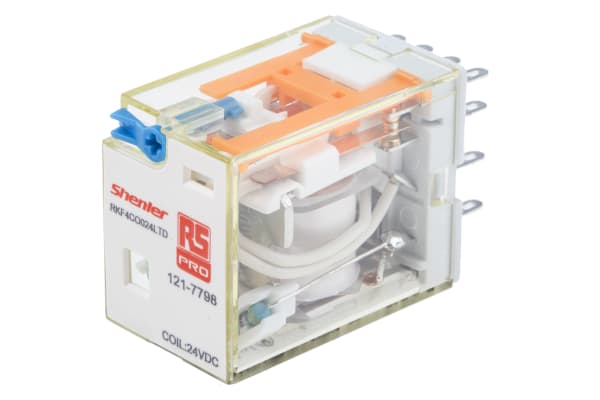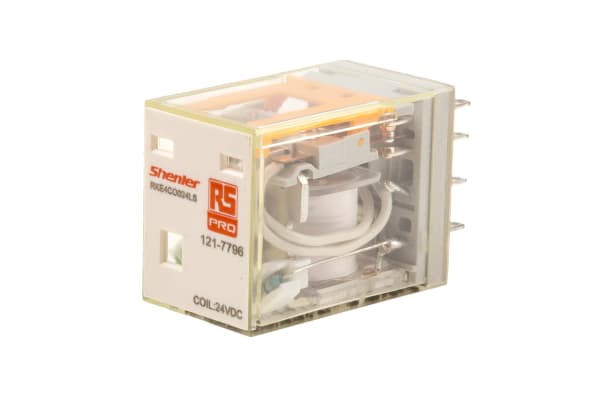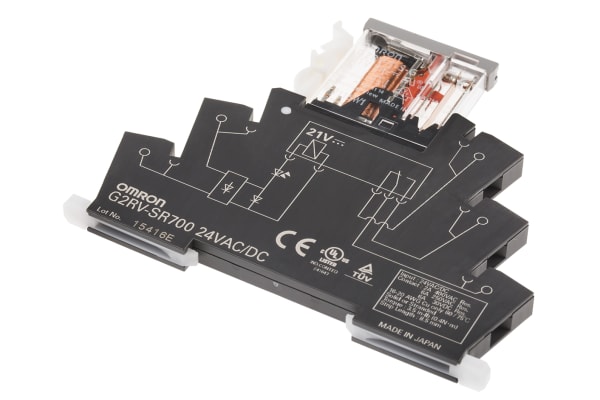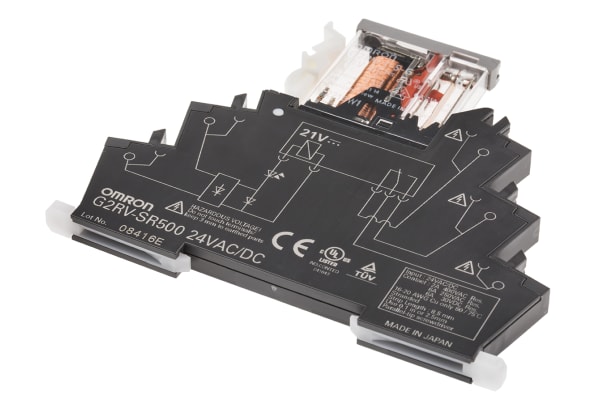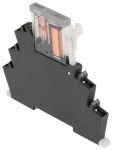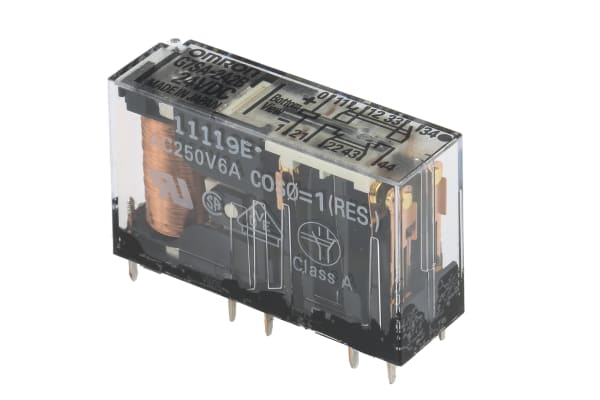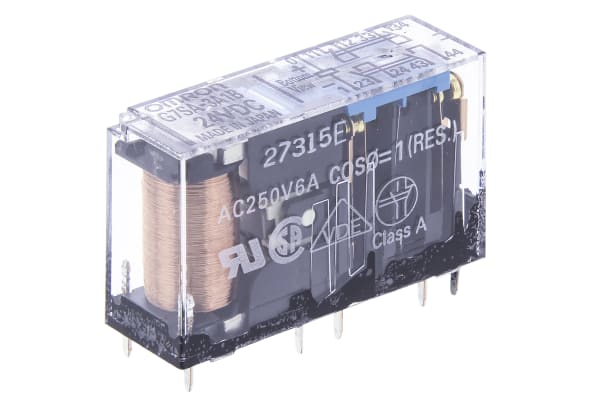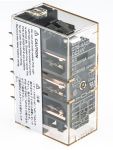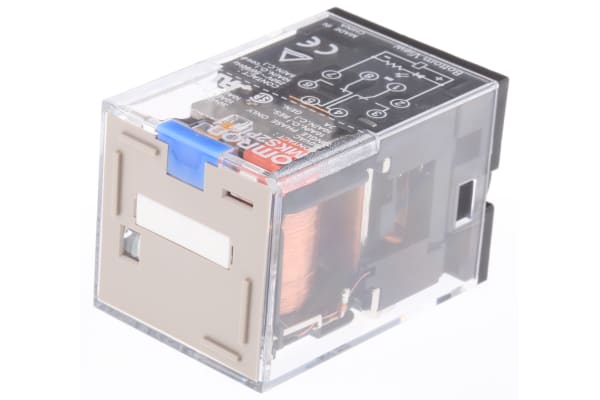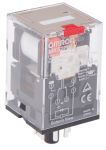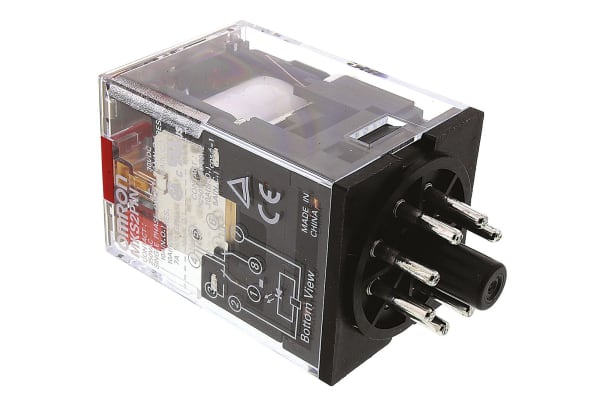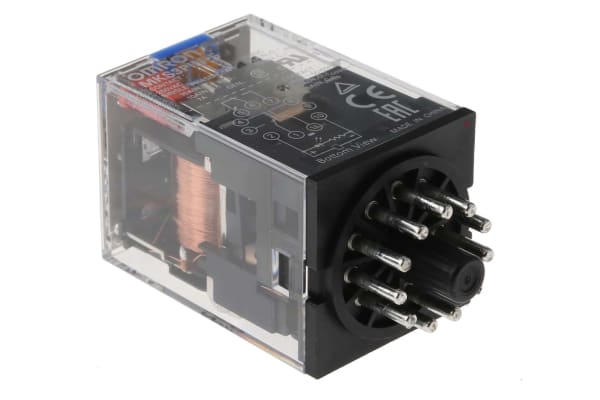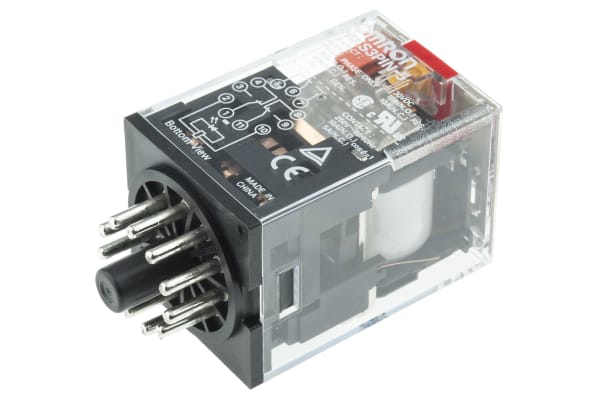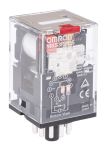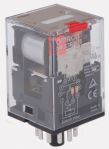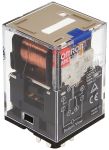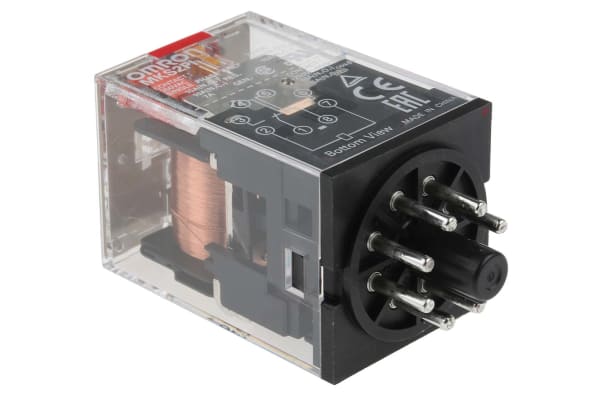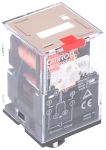Non-Latching Relays
Relays are electrical switches that are operated by electrical impulses with the primary function to open and close a circuit, they can also be referred to as industrial switches. There are 2 main types available, latching and non–latching relays.How do non-latching relays work?Non-latching relays are in a normally closed (NC) position and will stay in this state without power. When power passes through the circuit, the relay switched to a normally open (NO) position by using an internal coil to generate a magnetic force, holding this NO position. Once the current is turned off, it returns to the NC position. This makes non-latching relays well suited to push-button applications like keyboards and micro-controller input buttons.What are non-latching relays used for?Non-latching relays are highly durable and versatile components, making their performance long lasting and suitable for use in a wide range of applications, such as:Automotive enginesHousehold appliancesIndustrial machineryMedical equipmentTelecommunications equipmentWhat is the difference between latching and non-latching relays?Both types of relays in similar in design and function, however, a significant difference between them is that a latching relay will remain in the last position it when it was last powered, whereas a non-latching goes back to its normal position. This makes each more type of relay suitable for different applications. Considerations when selecting a relayWhen choosing a relay, it is important to consider a number of specifications to ensure it is fit for purpose, some factors include:Coil voltage – the required voltage to actuate the switching mechanism. If a voltage is too high this could damage the components, if it is too low then it will not actuate. Contact configuration – This is the state the contacts are in without power. For example SPST, single pole single throw.Contact material – the relay contacts are available in many materials that have certain properties. Common materials are gold, silver, tin oxide and nickel Coil power – the amount of power (watts) the coil operates at. This must match the power in the circuit for correct function. Coil resistance – the amount of resistance (ohms) in the circuit that the coil creates.
-
RS PRO, 115V ac Coil Non-Latching Relay 4PDT, 6A Switching Current Plug In, 4 Pole
IDR133,629.86 -
RS PRO, 24V dc Coil Non-Latching Relay 4PDT, 6A Switching Current Plug In, 4 Pole
IDR181,984.15 -
RS PRO, 24V dc Coil Non-Latching Relay 4PDT, 5A Switching Current Plug In, 4 Pole
IDR138,245.02 -
Omron, 24V ac/dc Coil Non-Latching Relay SPDT, 50mA Switching Current DIN Rail Single Pole, G2RV-SR700-AP AC/DC24
IDR239,149.20 -
Omron, 24V ac/dc Coil Non-Latching Relay SPDT, 6A Switching Current DIN Rail Single Pole, G2RV-SR700 AC/DC24
IDR227,191.74 -
Omron, 24V dc Coil Non-Latching Relay SPDT, 6A Switching Current DIN Rail Single Pole, G2RV-SR700 DC24
IDR315,509.12 -
Omron, 230V ac Coil Non-Latching Relay SPDT, 6A Switching Current DIN Rail Single Pole, G2RV-SR500 AC230
IDR406,343.86 -
Omron, 24V ac/dc Coil Non-Latching Relay SPDT, 6A Switching Current DIN Rail Single Pole, G2RV-SR500 AC/DC24
IDR247,225.73 -
Omron, 24V dc Coil Non-Latching Relay SPDT, 6A Switching Current DIN Rail Single Pole, G2RV-SR500 DC24
IDR231,387.34 -
Omron, 24V dc Coil Safety Relay DPDT, 6A Switching Current PCB Mount, 2 Pole, G7SA-2A2B 24DC
IDR605,739.75 -
Omron, 24V dc Coil Safety Relay 3PNO, SPNC, 6A Switching Current PCB Mount, 3 Pole, G7SA-3A1B 24DC
IDR642,346.36 -
Omron, 24V dc Coil Non-Latching Relay 4PNO, DPST, 10A Switching Current PCB Mount, 4 Pole, G7S-4A2B-E DC24
IDR1,244,834.52 -
Omron, 24V dc Coil Non-Latching Relay DPDT, 10A Switching Current Plug In, 2 Pole, MKS2PIN DC24
IDR273,658.01 -
Omron, 230V ac Coil Non-Latching Relay DPDT, 10A Switching Current Plug In, 2 Pole, MKS2PIN AC230
IDR143,174.85 -
Omron, 110V ac Coil Non-Latching Relay DPDT, 10A Switching Current Plug In, 2 Pole, MKS2PINAC110
IDR225,828.17 -
Omron, 24V dc Coil Non-Latching Relay 3PDT, 10A Switching Current Plug In, 3 Pole, MKS3PIN-5 DC24
IDR252,155.56 -
Omron, 230V ac Coil Non-Latching Relay 3PDT, 10A Switching Current Plug In, 3 Pole, MKS3PIN5AC230
IDR435,083.72 -
Omron, 24V ac Coil Non-Latching Relay 3PDT, 10A Switching Current PCB Mount, 3 Pole, MKS3PIN-5 AC24
IDR252,155.56 -
Omron, 110V ac Coil Non-Latching Relay 3PDT, 10A Switching Current PCB Mount, 3 Pole, MKS3PIN-5 AC110
IDR252,155.56 -
Omron, 24V dc Coil Non-Latching Relay DPDT, 10A Switching Current Plug In, 2 Pole, MKS2PI DC24
IDR226,562.40 -
Omron, 24V dc Coil Non-Latching Relay 3PDT, 10A Switching Current Plug In, 3 Pole, MKS3PI-5 DC24
IDR300,300.07 -
Omron, 12V dc Coil Non-Latching Relay DPDT, 10A Switching Current Plug In, 2 Pole, MKS2PI DC12
IDR190,375.35 -
Omron, 230V ac Coil Non-Latching Relay DPDT, 10A Switching Current Plug In, 2 Pole, MKS2PIAC230
IDR203,486.60 -
Omron, 110V ac Coil Non-Latching Relay DPDT, 10A Switching Current Plug In, 2 Pole, MKS2PI AC110
IDR190,270.46




